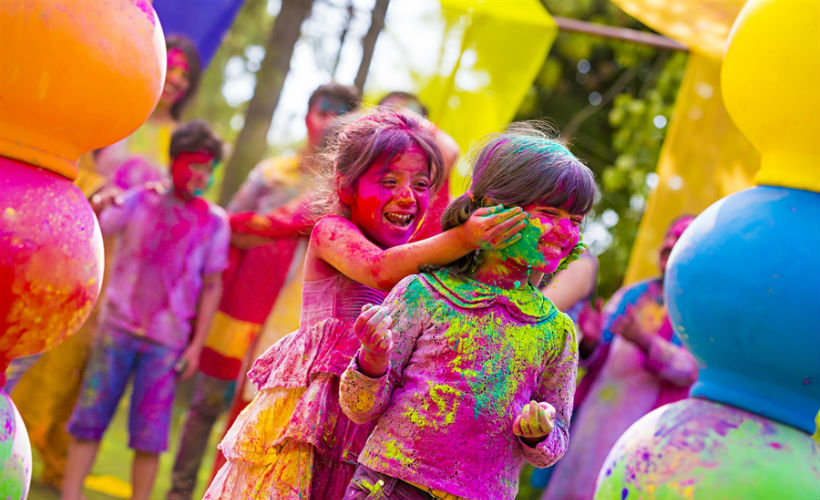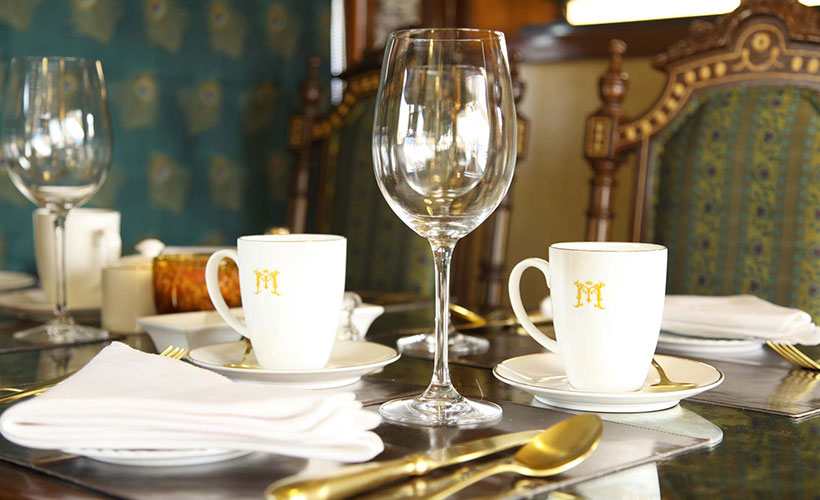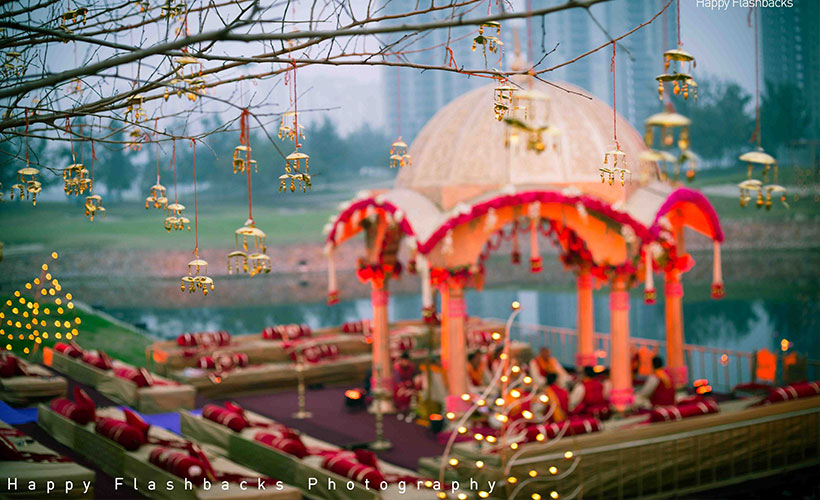
In India, a wedding is much more than two people in love deciding to spend their lives together. It is two families deciding to try to love each other. It is a battle of whose family is doing things right. It is the not-always-unanimous embracing of tradition or the deliberate overriding of it. But if you were to attend an Indian wedding (especially, a typical north Indian wedding), chances are you’ll be having too much fun to ever notice all that.
We are loud, we are boisterous, and the wedding season brings out the best and worst of it in all of us. It is that time of year when a large part of ‘social’ India will be dressing up for a wedding or an associated ceremony every other day (lesson one: Indian weddings are spread over days, each with its special customs and rituals).
Indian weddings are a serious business; families blow up their entire lives’ savings to make this one event successful. No wonder then, in India, bride and groom sit on thrones at the wedding and even bad marriages survive a lifetime – after all, when you’ve spent truck-loads of money on this one occasion, you want it to work. No excuses, period.
If you hold in your hands a wedding invitation from India, stop contemplating and book those tickets right away. We tell you the most important things you need to know so you’re prepared for what’s about to hit you!
1. Quiet and intimate: No such thing
First and foremost, when weddings are the topic of conversation, these two words do not exist in a typical Indian’s dictionary. We are a populous country, so far-flung relatives, distant friends, office colleagues, a cousin’s cousin, a neighbour from 30 years ago, and so on, are all invited, amounting to many more hundreds of people than are really necessary — it is impossible to expect a wedding of this magnitude to be quiet and intimate.
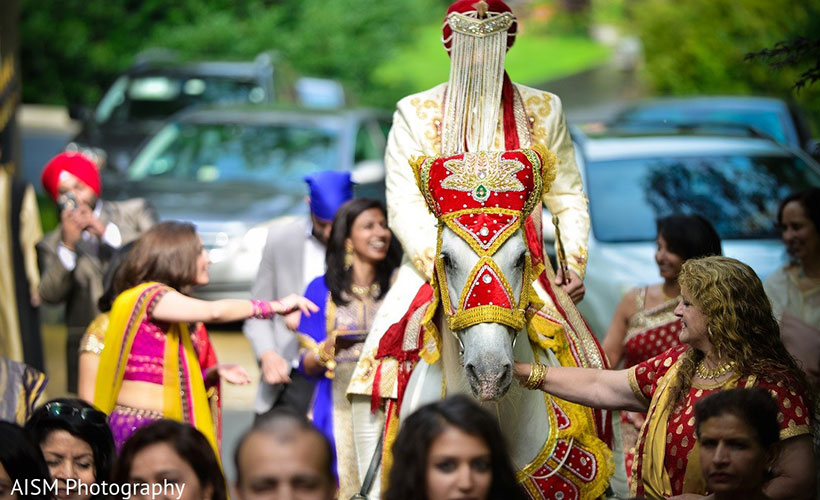
2. The baraat (groom’s entourage and grand entry) that never ends
If you are from the groom’s side, make sure your clothes are pinned up properly (especially, if you’ve chosen to wear a saree). There will be hours of ridiculous dancing (watch out for the serpent dance) by friends and family of the groom, that starts about a kilometre from the venue. The live band is loud and mostly out of tune. A human chain carries heavy chandelier-like lights on their shoulders and walks alongside the baraat. The groom’s entourage dance for as long as they can – they expect this to build excitement in the bride, who can usually be found waiting at the venue alongside her family and friends all seated and waiting patiently in white linen-covered chairs, sipping a mojito disguised as a fresh lime soda. And this hours-long process takes place on a regular moving road leading to snarled-up traffic, but so what, the more, the merrier!
3. Searching for an eligible rishta (relationship a.k.a. marriage prospect)
All girls falling in the Indian-standard ‘marriageable age’ category dress up for such an occasion. With arranged marriages being still quite common even in the cities, there are furtively hopeful mothers of boys who are waiting to acquire the status of a mother-in-law, and weddings are where the search ends. So don’t be amazed if you are (and you will be) approached with a proposal.
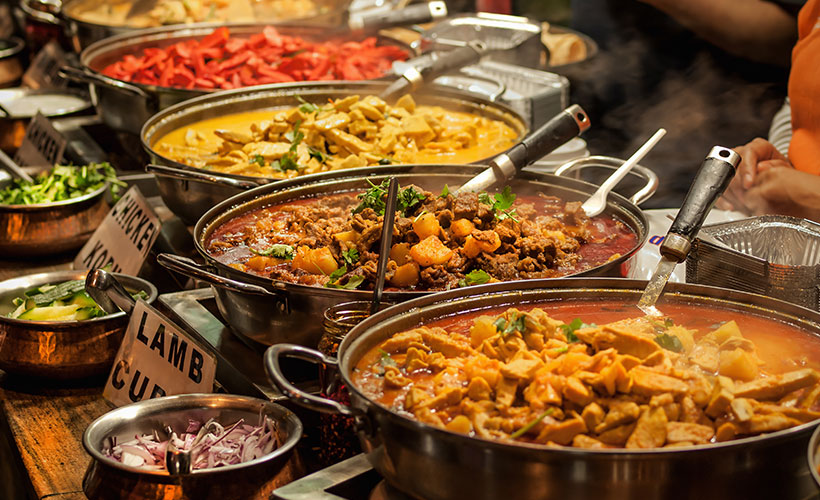
4. It’s a food fest
Hungry? An Indian wedding is an unlimited buffet; judgment must and will be passed by almost every guest on pretty much every dish. The current trend is to have as many food stations and cuisines as possible. There are three to four dishes from every popular regional cuisine in addition to pasta counters, pizza corners, Mexican dishes, and of course, an array of sweets to match the number of savoury items. Eat as much as you can and don’t be amazed when the weighing scale shows a few extra pounds.
5. Dance, dance, baby!
Even the most sombre of events have a way of turning into something of a dance party at the drop of a tune. You may find your head unconsciously bobbing to no beat at all, for months after the wedding is done. While spontaneously breaking out into a jig is only to be expected, it is also common to have a tightly choreographed dance routine that occurs on the night of the sangeet (evening of music and dance.) Practice sessions might go on for weeks beforehand, the video may have been WhatsApp-ed to you in advance so you can rehearse ahead of your arrival or you may be quickly indoctrinated in signature Bollywood moves of the season minutes before you go on stage. This is everyone’s chance to be a star for a day, both bride’s and groom’s sides seem to love it, and hey, it leads to more dancing! Win-win.
6. Watch out for drunk uncles
In an Indian wedding, you will find people high in spirits and high on spirit. It may be a no-alcohol affair but if you see a young crowd gathered around an open car boot, that’s where the supply is from. While most drink what they can handle, every wedding has one or two odd uncles who are expected to make a scene in an inebriated state. Years later, in some other wedding, he will still be remembered.
Another category that makes a wedding memorable is Mr. Grumpy. He will be very upset at something someone did or did not do. He makes sure his face and attitude say “I am your guest and I am unhappy”. His expectation? A public apology.
A word of caution for you: Stay away from both. The former may be inappropriate, the latter may be harmless, but you’ve got a lot of food to eat and no time to waste!
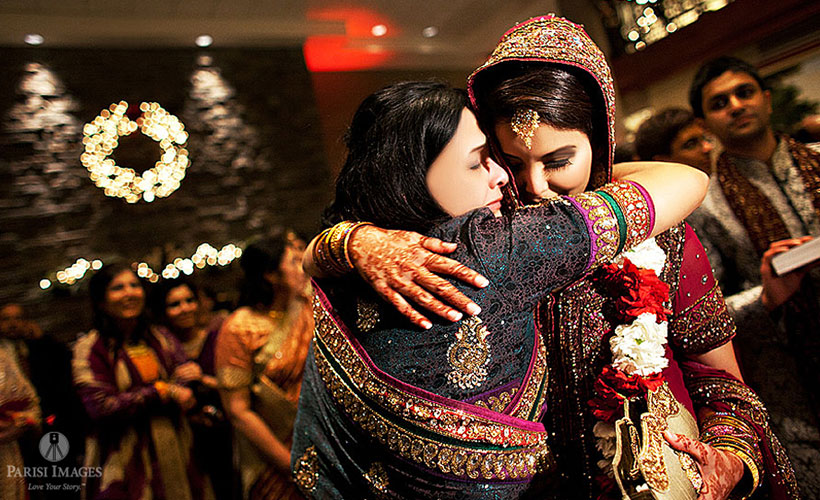
7. The post-wedding blues
On day 4 of the celebrations, you will find yourself joining the chorus of lamenting guests who claim they cannot eat another bite or drink one more drink. While they begrudgingly saunter up to the bar, they’ll even have inside jokes shared with their wedding friend – someone they met three days ago, and now spend all their waking hours with. And everyone agrees that the madness must end. Then it does.
As the bride bids adieu to her family in a ritual called the bidai (farewell) where the mother inevitably sheds a tear, you may yourself feel a pit of sadness in your stomach that the much-anticipated event is over. You go back to your life of calm, without your new wedding buddies who faithfully stay friends on Facebook, united by memories of mehendi and mayhem.
Until the next wedding, that is. Next weekend? Really? Oh dear, here we go again.
